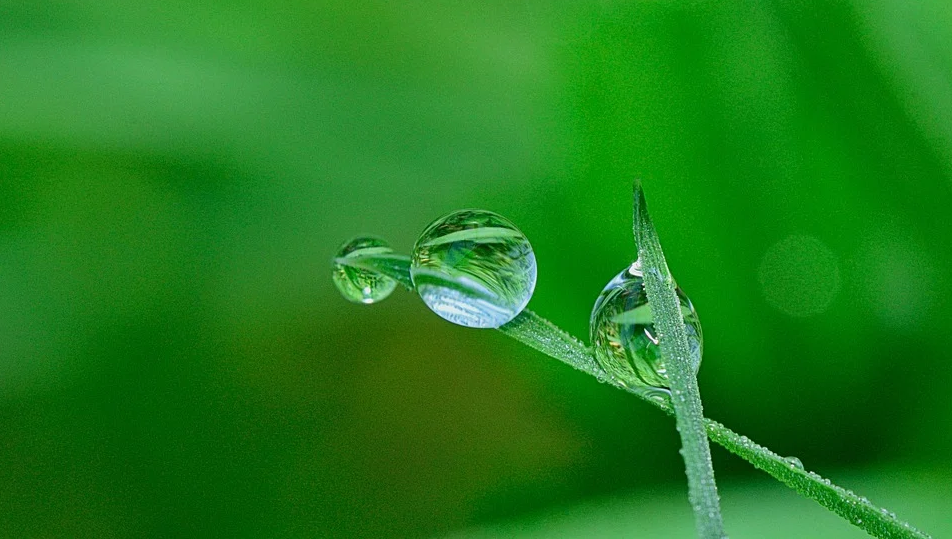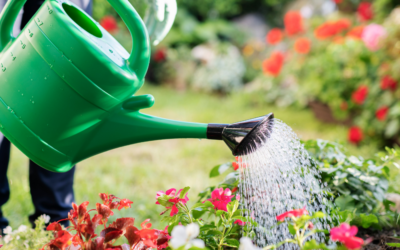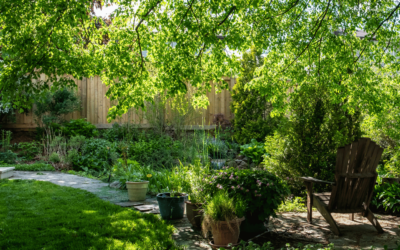We all know that that having a lush, green patch of grass makes your backyard look amazing. It’s the centrepiece of your outdoor area, and it acts as a frame to give aesthetic appeal to your house. But it’s not all about looks, a green lawn actually improves the environment and actually reduces solar radiation around the house, keeping it a little cooler. In an Aussie summer any reduction in temperature is a good result.. Lawn maintenance changes from season to season because it’s so reliant on climatic conditions, and caring for your lawn during summer requires a little more attention. When it’s hot, there are a lot of ways to care for your lawn. These include taking care of the lawn equipment, using the right fertiliser, controlling weeds, controlling pests, and using wetting agents. Check out these lawn care tips to keep your lawn healthy and green during the hotter months.
Tip #1 Mow Your Lawn
Even if you don’t have the best mower in the world it’s still important to ensure it’s well maintained..
As with any equipment, general and regular maintenance is necessary to ensure your mower or whipper snipper is working properly. This is about to be the peak period of mowing so taking your equipment into a service agent for a tune up at the beginning of Summer is a great way to make sure everything is in working order.
If you’re new to lawn care, you may not know that the height you mow the lawn is incredibly important to the general health of your turf. Firstly, remove any large debris from the lawn before mowing as this can ruin the mower or even worse be shot out the chute and hit yourself, a window or kids helping you mow the lawn.
We highly recommend only mowing one-third of the grass blade. Cutting too close to the crown of the plant (where the leaves leave the main stem) can injure the turf and create unsightly, brown grass. The area near the crown of the grass blade is where new growth occurs. Cutting the grass too short makes it difficult for the grass to start photosynthesis. The inability to photosynthesise increases vulnerability to pests and a variety of diseases. Grass that is cut too short, also allows sunlight to reach weed seeds, helping them germinate and spread.
We’ve seen it before, people mowing low thinking it will reduce cutting, it won’t. The grass changes it’s growth habit to recover and starts to put on more leaves. With the added weeds this practice creates you’re just creating more work for yourself. If you think of mowing as a hot sweaty chore than you should consider getting a self-propel mower which takes the pushing out of the equation.
In short… a moderate cut of your lawn each time you mow, is what you’re looking to achieve.
Tip #2 Watering Your Lawn
Watering the lawn properly is essential for your lawn. Not watering enough or watering too much can lead to brown, dead grass. Timing is important to water your lawn appropriately. Water the lawn in the morning and the early evening for best results. When you water in the heat of the day, the moisture evaporates, leaving the grass parched. Don’t water at night because this can lead to longer leaf wetness, a precursor for fungal issues. Watering should be a few times a week, and sufficient water should be put on so the water reaches down into the soil about 150mm. Too frequent watering will cause the lawn to become soggy and fungus-infected as well as shortening roots. Remember to abide by water restrictions in your area to conserve the water supply. Choose a drought-tolerant lawn to conserve water.
Tip #3 Wetting Agents
Wetting agents, like Lawnplay Aquaturf, are absolutely critical during summer to make the most out of your water usage. Wetting agents are surfactants that reduce water’s surface tension to help water soak into the ground. Soils can become resistant to water through organic matter buildup. This organic matter creates a waxy surface on the soil that repels water and prohibits it from reaching the lawn roots. The problem is more common with sandy soils, but occurs in all soils, often from drought conditions that leave the soil damaged These agents come in liquid or granular form. For liquid wetting agents, use a bottle of the agent attached to a hose and spray. You should use wetting agents on your lawn twice a year, in spring in preparation for summer and autumn.
Tip #4 Fertilise Your Lawn
There are many ways you can fertilise your lawn, let’s start with the type of product you can use first. You can select either a granular product or a liquid to fertilise with and often the choice is made based on whether you have a sprayer or a spreader to apply with.
Given that we are in summer a peak growth period it’s important to use a slow release fertiliser regardless of choosing granular or liquid, this will help protect against a surge of growth which will have you scalping and damaging your lawn.
The first step in fertilising your lawn is to check if the ground is hydrophobic, meaning the ground won’t accept water. If the soil is hydrophobic, water will pool on the surface or runoff. Use a wetting agent to solve this problem.
The next step depends on what fertiliser type you use. If you prefer to use granular then Lawn Play All Rounder is a slow release fertiliser suitable for this time of year. Simply use a lawn spreader to distribute the fertiliser to get even coverage over the ground. Fill the spreader with fertiliser and walk at a steady pace, as you go for an even spread on the lawn. Water the lawn immediately after application to help the granular dissolve. One of the big benefits of this slow release granular is it continues to feed for 3 months, so there’s no more work until Autumn,
Applying liquid fertiliser is pretty easy too if you have a sprayer, and we totally recommend everyone should have. Lawnganics Nourish is an organic liquid fertilser which nourishes your soil at the same time, with so many benefits you’ll need to check out the product page to find out. Simply add 200ml to 5L of water and apply over 100m2, apply monthly when the lawn is growing.
Tip #5 Plant Growth Regulators
Never heard of these before? Well, let’s just take a minute, because this is about to change your lawn game forever.
Plant growth regulators (PGR’s) are one of the professional turf industries best kept secrets. PGR’s, like Primo Maxx, are exactly what the name suggests, they regulate your plants growth. They make your lawn denser, tighter, greener while also reducing clippings and mowing. Now who doesn’t need that?
A must for this peak growth period to give you time back to spend with family and friends. Simply apply at super low rates of 10ml per 100m2, this will slow your lawn significantly.
.
Tip #6 Common Lawn Diseases and Pests
Australia has common lawn diseases and pests that can cause your lawn to brown off and die. The most common lawn diseases fall into the leaf spot group. Spots or lesions appear on the lawn’s leaves and initially don’t do much, but the problem starts to get bad when there is enough spots that they join together (coalesce), once joined together these spots prohibit the movement of water and nutrients to the top of the leaf and this section dies off. As you can imagine the top of the leaf dying off isn’t to big a deal but when they attack the crown you are losing the whole turf plant. If you have one of these diseases it’s important to consult an expert, like the lawn genius, to resolve the underlying issue that has caused this disease.
Insect pests love feeding on your lawn. One such pest is the mole cricket to look out for. The mole cricket is a brown, elongated insect pest that has a hard, shiny head, wings and body large front legs with serrated claws for digging and hind legs used for removing loose soil during its burrowing. They infest lawns from mid-spring to late summer. Keeping the lawn well-fertilised and strong helps thwart mole crickets. You won’t often find the pest so look for holes in your lawn that have a tiny size tunnel (think Bugs Bunny but smaller). Another pest to be on the lookout for during summer is Lawn Armyworm. These are easily the worst lawn care pest and have been known to strip a lawn overnight when numbers are high. These caterpillar looking creatures come out at night and feed on the leaves of your lawn (and other graden pests) leaving it stalky and brown looking To find out more about this oest check out our blog Armyworms | The Lawn Shed. .
Proper mowing of your lawn to the correct height and watering the lawn adequately as well as using wetting agents can help keep your lawn green and healthy. Using fertiliser correctly in pellet and liquid forms can aid in mowing and watering for strong lawn grass. Awareness of lawn diseases such as leaf spot or pests such as lawn armyworm and mole crickets can help you identify, prevent and get rid of common pests.
For more lawn maintenance tips and help with caring for your lawn, contact The Lawn Shed at their website.




